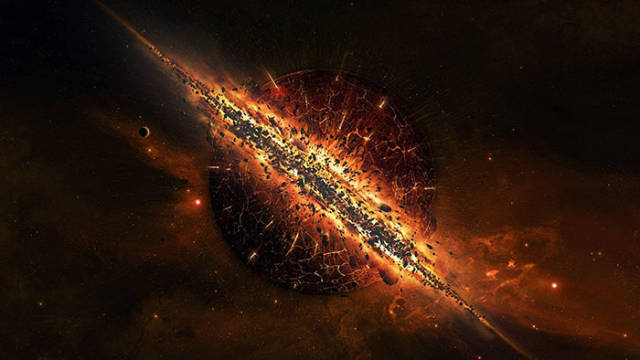1 Trillion Years Into The Future

Estimated time the end of the Universe via the Big Crunch, assuming a "closed" model. Depending on how long the expansion phase is, the events in the contraction phase will happen in the reverse order. Galaxy superclusters would first merge, followed by galaxy clusters and then later galaxies. About 100,000 years before the Big Crunch, stars have become so close together that they will begin to collide with each other. Also, the cosmic microwave background temperature will rise to about 100,000 K (100,000 °C; 180,000 °F), which means that stars will no longer be able to expel their internal heat, slowly cooking themselves until they explode. Minutes before the Big Crunch, the temperature will be so great that atomic nuclei will disband and the partials will be sucked up by already coalescing black holes. Finally, all the black holes in the universe will merge into one singular black hole containing all the matter in the universe, which it would then devour the universe, including itself. After this, it is possible that a new Big Bang would follow and create a new universe. The observed actions of dark energy do not support this scenario; however, the properties of dark energy are still not known, it is possible that dark energy could reverse sometime in the future. The universe's expansion, assuming a constant dark energy density, multiplies the wavelength of the cosmic microwave background by 1029, exceeding the scale of the cosmic light horizon and rendering its evidence of the Big Bang undetectable. However, it may still be possible to determine the expansion of the universe through the study of hypervelocity stars.